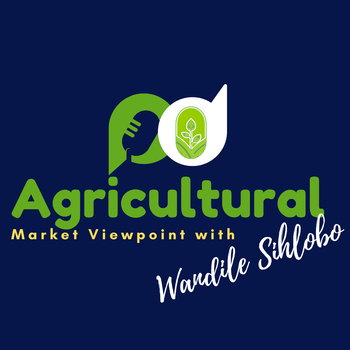
Positive outlook for SA summer crops
Loading player...
The start of South Africa's 2022/23 summer crop production season was challenging for farmers and agricultural role players because of excessive rains. Crop planting in various regions of the country was delayed by roughly a month, threatening yield prospects. But the warm weather at the end of January and much of February helped improve conditions on the farms. It thus eased concerns about the possibility of smaller yields due to excessive soil moisture.
Moreover, the persistent load-shedding raised concerns that areas under irrigation could receive poor yields. Still, the return of rainfall, at a moderate pace, from mid-February provided a much-needed breather and improved crop conditions. Within summer crops, roughly 20% of maize and 15% of soybeans are produced under irrigation.
This sentiment of better agricultural conditions was confirmed by the data released by the Crop Estimates Committee (CEC) this afternoon. For example, South Africa's 2022/23 overall summer crop production is forecast at 19,3 million tonnes, up 3% from the previous season. If we consider the large crops like maize, soybeans and sunflower seed, production is forecast at 15,6 million tonnes (up 1% y/y), 2,7 million tonnes (up 19% y/y), and 775 260 tonnes (down 8% y/y), respectively.
The expected improvement in the maize harvest is on the back of expected better yields as the area plantings are down marginally from the 2021/22 season. Meanwhile, the robust forecast increase in soybeans results from both expected large yields and an increase in planted area. The fall in the sunflower seed production forecast mirrors the reduced planted area and yields in some areas. Other small crops such as sorghum and groundnuts have a reasonably large expected harvest.
For more details, listen to this week’s podcast.
You can also read more about various agricultural economic matters we explore regularly on my blog: https://wandilesihlobo.com/
Podcast production by: Lwandiso Gwarubana, Richard Humphries, and Sam Mkokeli
Moreover, the persistent load-shedding raised concerns that areas under irrigation could receive poor yields. Still, the return of rainfall, at a moderate pace, from mid-February provided a much-needed breather and improved crop conditions. Within summer crops, roughly 20% of maize and 15% of soybeans are produced under irrigation.
This sentiment of better agricultural conditions was confirmed by the data released by the Crop Estimates Committee (CEC) this afternoon. For example, South Africa's 2022/23 overall summer crop production is forecast at 19,3 million tonnes, up 3% from the previous season. If we consider the large crops like maize, soybeans and sunflower seed, production is forecast at 15,6 million tonnes (up 1% y/y), 2,7 million tonnes (up 19% y/y), and 775 260 tonnes (down 8% y/y), respectively.
The expected improvement in the maize harvest is on the back of expected better yields as the area plantings are down marginally from the 2021/22 season. Meanwhile, the robust forecast increase in soybeans results from both expected large yields and an increase in planted area. The fall in the sunflower seed production forecast mirrors the reduced planted area and yields in some areas. Other small crops such as sorghum and groundnuts have a reasonably large expected harvest.
For more details, listen to this week’s podcast.
You can also read more about various agricultural economic matters we explore regularly on my blog: https://wandilesihlobo.com/
Podcast production by: Lwandiso Gwarubana, Richard Humphries, and Sam Mkokeli

